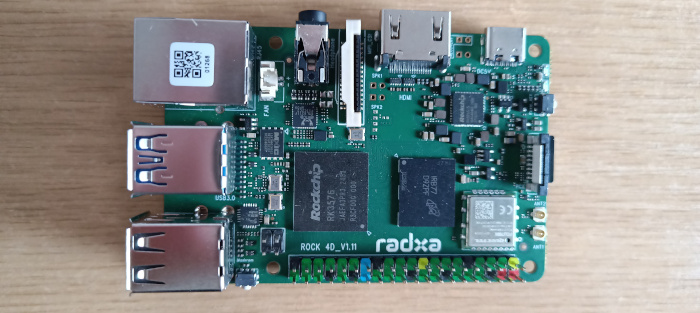This is a new series looking at the Radxa ROCK 4D single board computer. It’s billed as a high-performance SBC for Edge AI and 4K multimedia.
The computer is equipped with the Rockchip RK3576 or RK3576J SoC, the ROCK 4D offers an octa-core CPU (4x Cortex-A72 and 4x Cortex-A53), Mali-G52 GPU, and 6 TOPS NPU. It’s targeted at makers, IoT enthusiasts, hobbyists, PC users, industrial applications, and more.
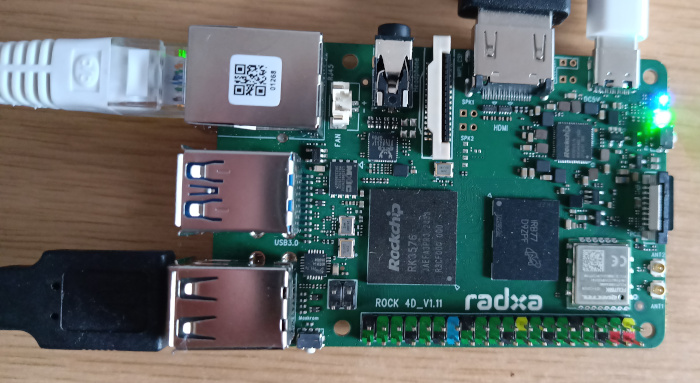
In this article I benchmark the ROCK 4D and compare it to a variety of single board computers (both ARM and RISC-V) as well as an Intel N100 Mini PC. The tests are run using the Phoronix Test Suite unless stated otherwise.
I’ll mainly focus on processor benchmarks for this article, but there are a few other tests included (graphics and memory).
Explanation of the legends used in the charts below:
RPI5 – Raspberry Pi 5 (ARM architecture)
OPi RV2 – Orange Pi RV2 (RISC-V architecture)
N100 – Intel N100 (x86_64 architecture)
OPi5 Max – Orange Pi 5 Max (ARM)
OPi R2S – Orange Pi R2S (RISC-V)
BPI-F3 – Banana Pi BPi-F3 (RISC-V )
AIBOX-3588S – Firefly AIBOX-3588S (ARM)
ROCK 5T – Radxa ROCK 5T (ARM)
ROCK 4D – Radxa ROCK 4D (ARM)
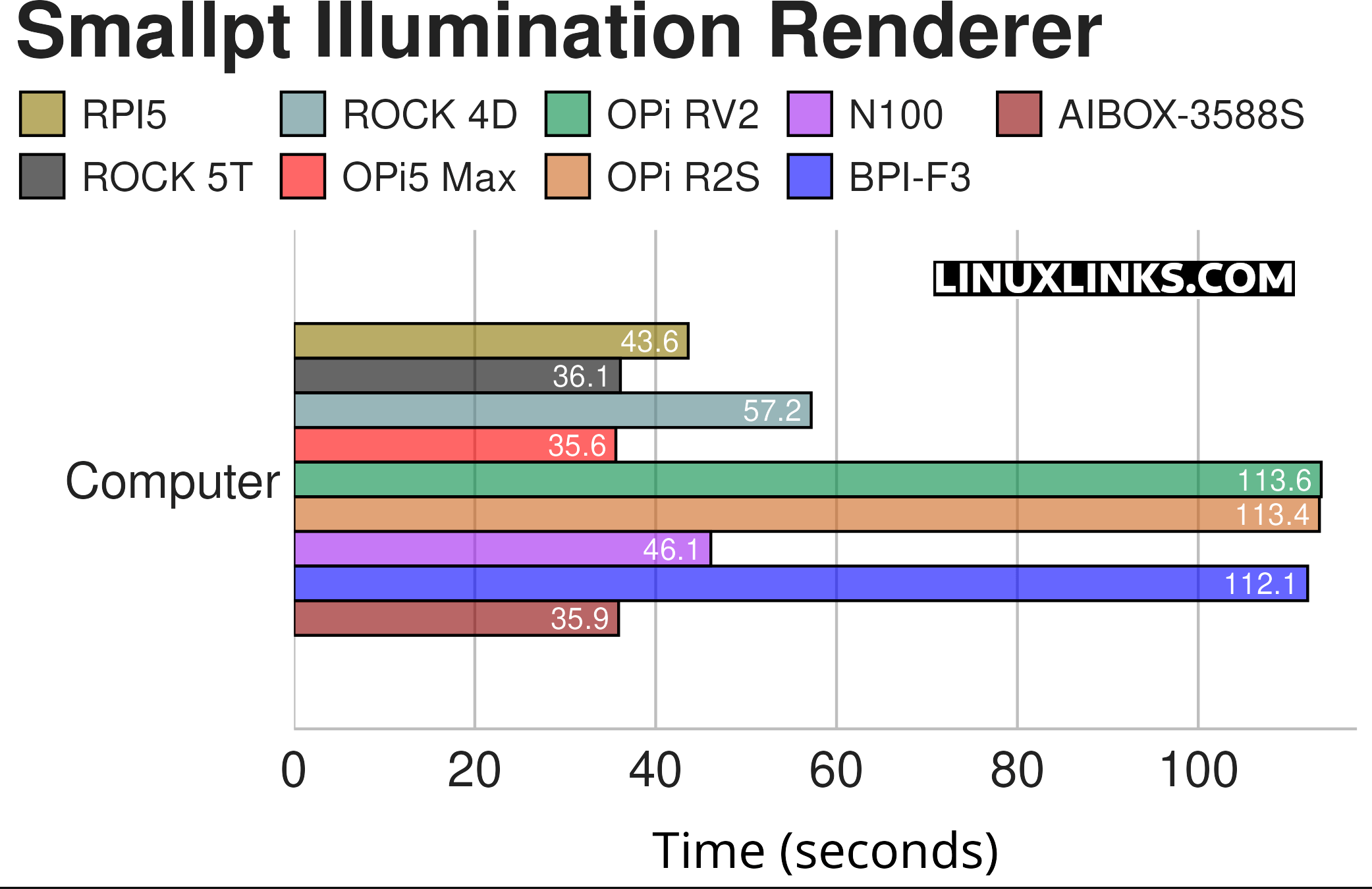
$ phoronix-test-suite benchmark smallpt
Smallpt is a C++ global illumination renderer written in less than 100 lines of code. Global illumination is done via unbiased Monte Carlo path tracing and there is multi-threading support via the OpenMP library.
With this benchmark, a shorter time indicates better performance. The ROCK 4D puts in a decent performance in this benchmark. It’s twice as quick as any of the RISC-V SBCs. And its performance isn’t that far behind the Raspberry Pi 5.
When taking into account performance, it’s important to also consider price. The ROCK 4D 2GB retails for £28.89, whereas the Raspberry Pi 5 2GB is much more expensive retailing for £48.
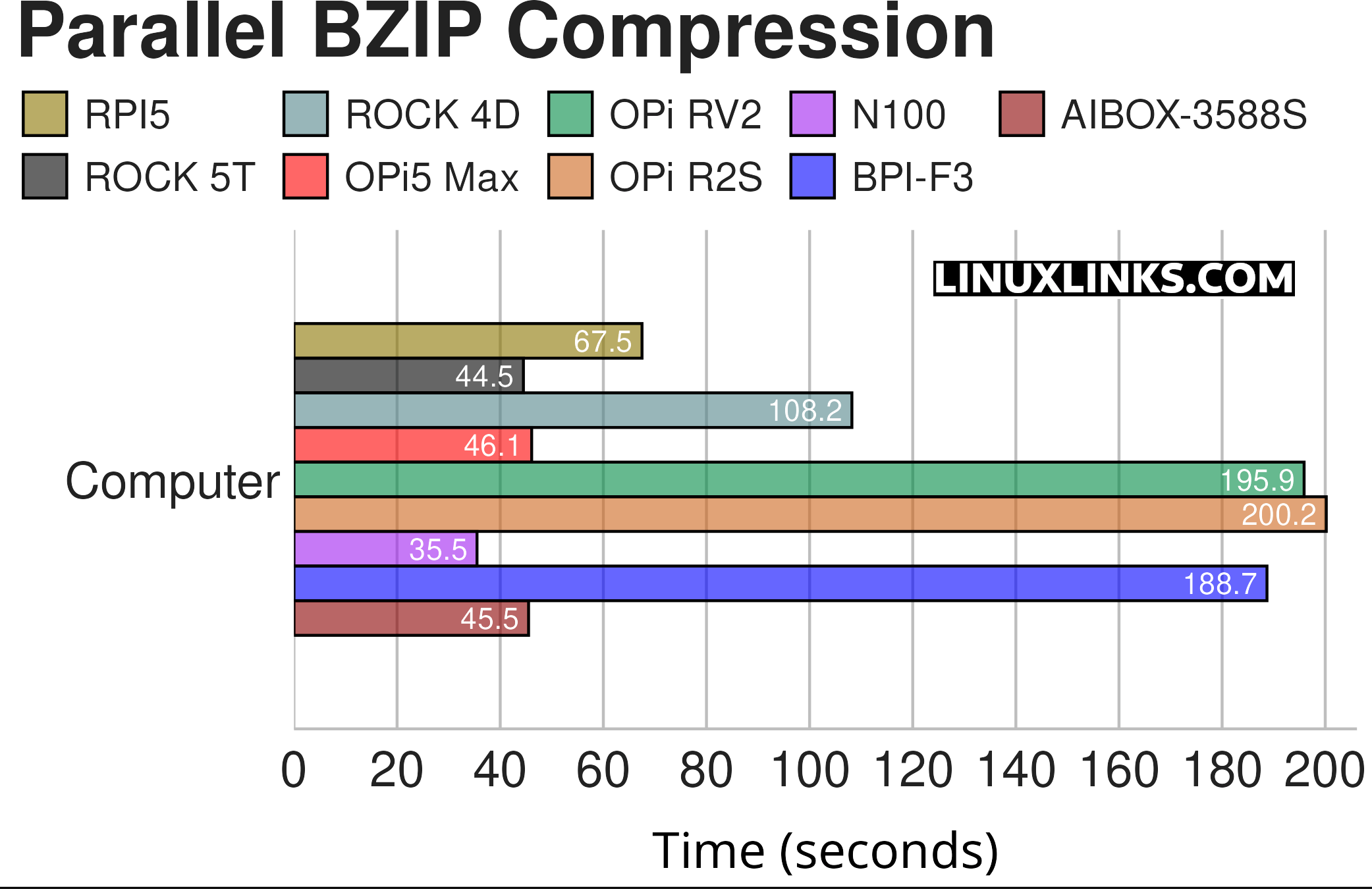
$ phoronix-test-suite benchmark compress-pbzip2
This test measures the time needed to compress a file (a .tar package of the Linux kernel source code) using BZIP2 compression.
Again a shorter time indicates better performance. The ROCK 4D is far more performant than the RISC-V boards, but its performance is still good compared to the other ARM boards from a value for money perspective.
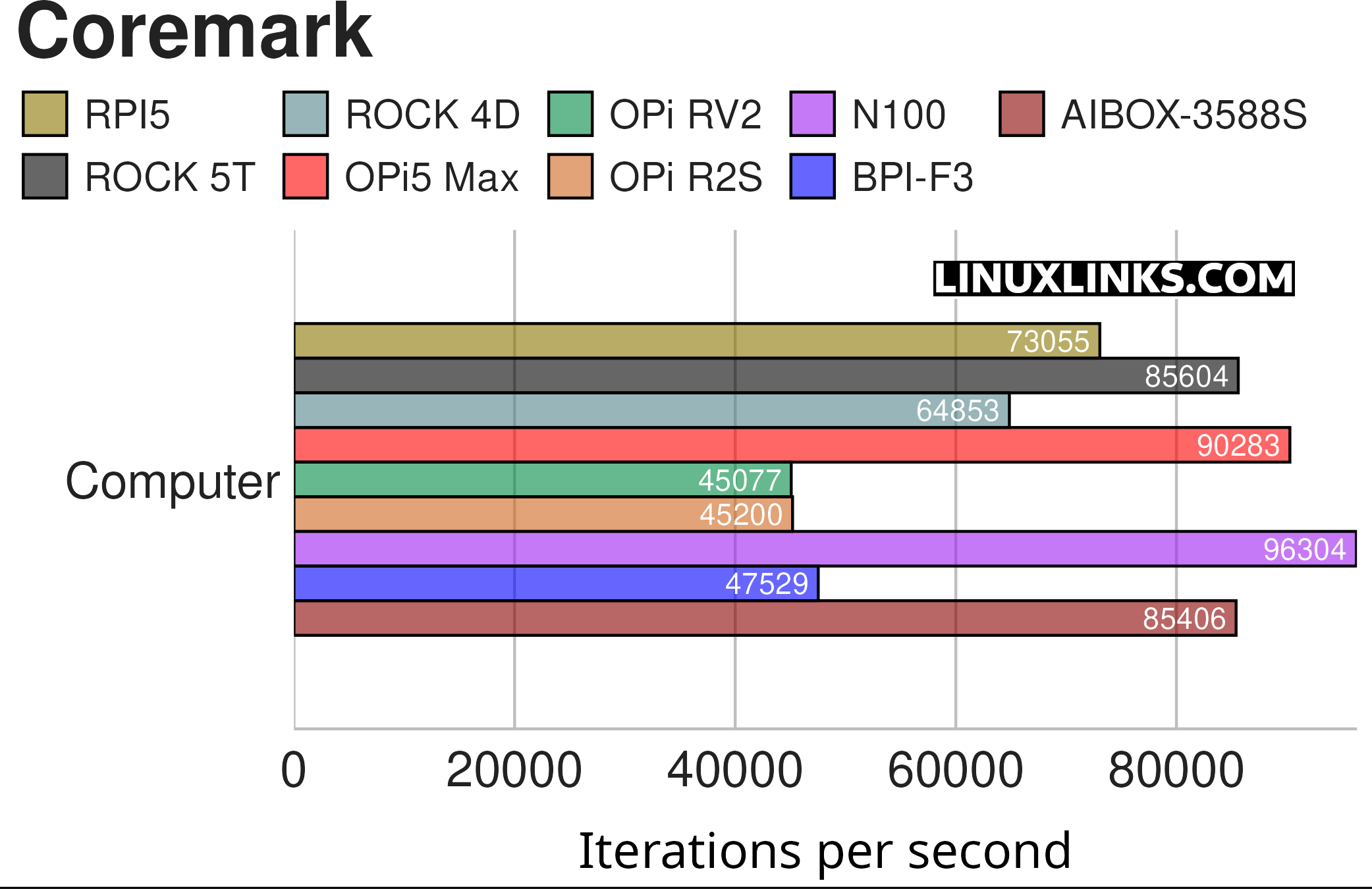
$ phoronix-test-suite benchmark coremark
Coremark is a benchmark that measures the performance of central processing units (CPU) used in embedded systems.
I’m impressed with the ROCK 4D here.
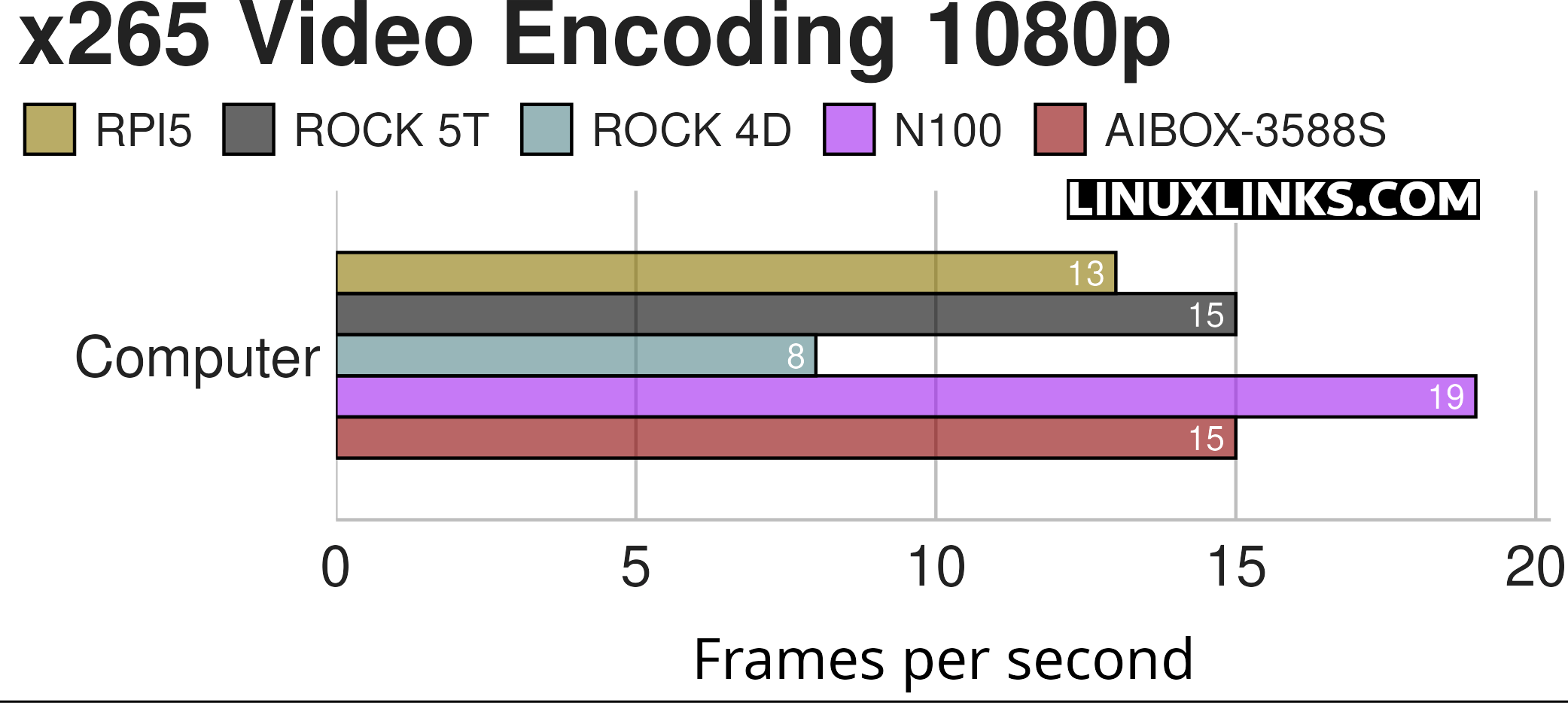
$ phoronix-test-suite benchmark x265
This is a simple test of the x265 encoder run on the CPU with 1080p and 4K options for H.265 video encode performance with x265.
None of the single board computers have much to write home about here.
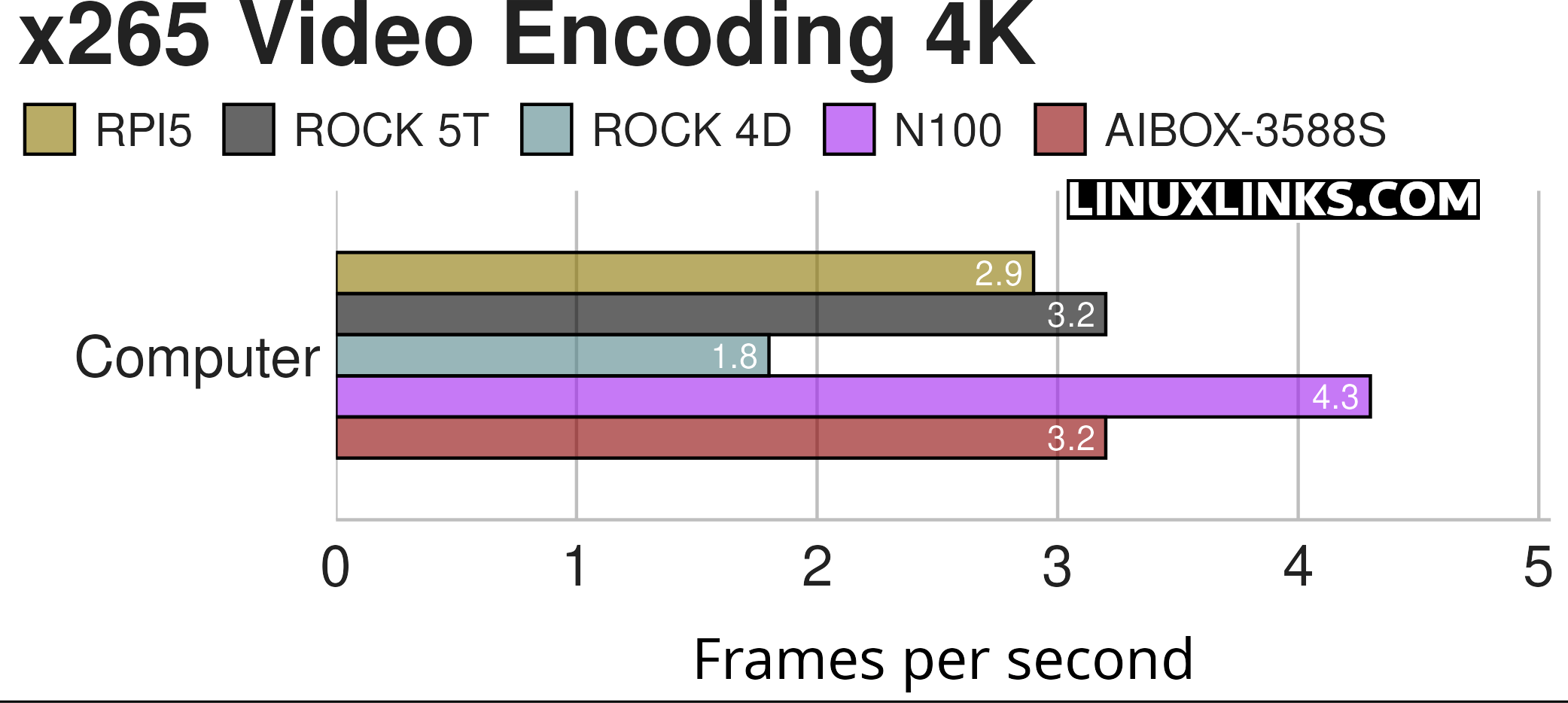
And the same here.
Let’s move on to a graphics benchmark, glmark2, an OpenGL 2.0 and ES 2.0 benchmark. Here are the results.
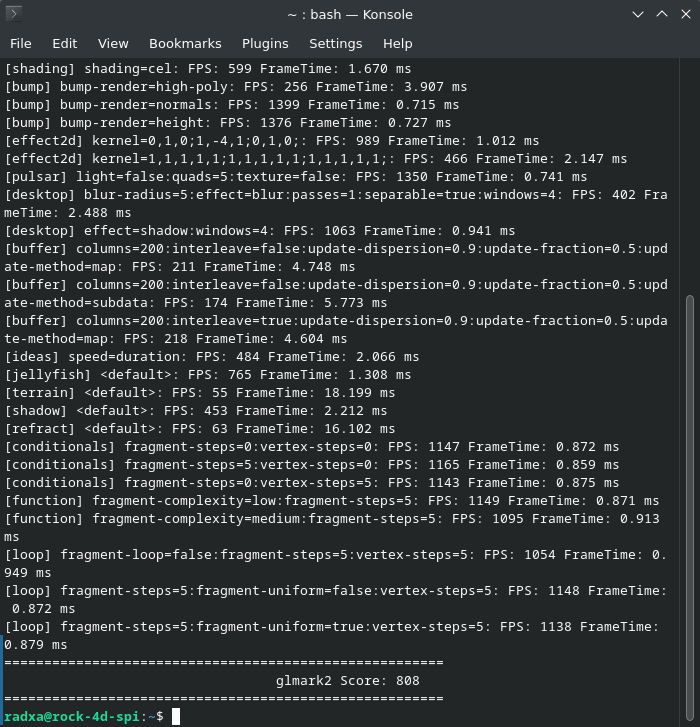
A glmark2 score of 808 is very respectable compared to more expensive machines. For example, the Firefly AIBOX-3588S scores 979, and the ROCK 5T scores 794.
Let’s move on to RAM performance.
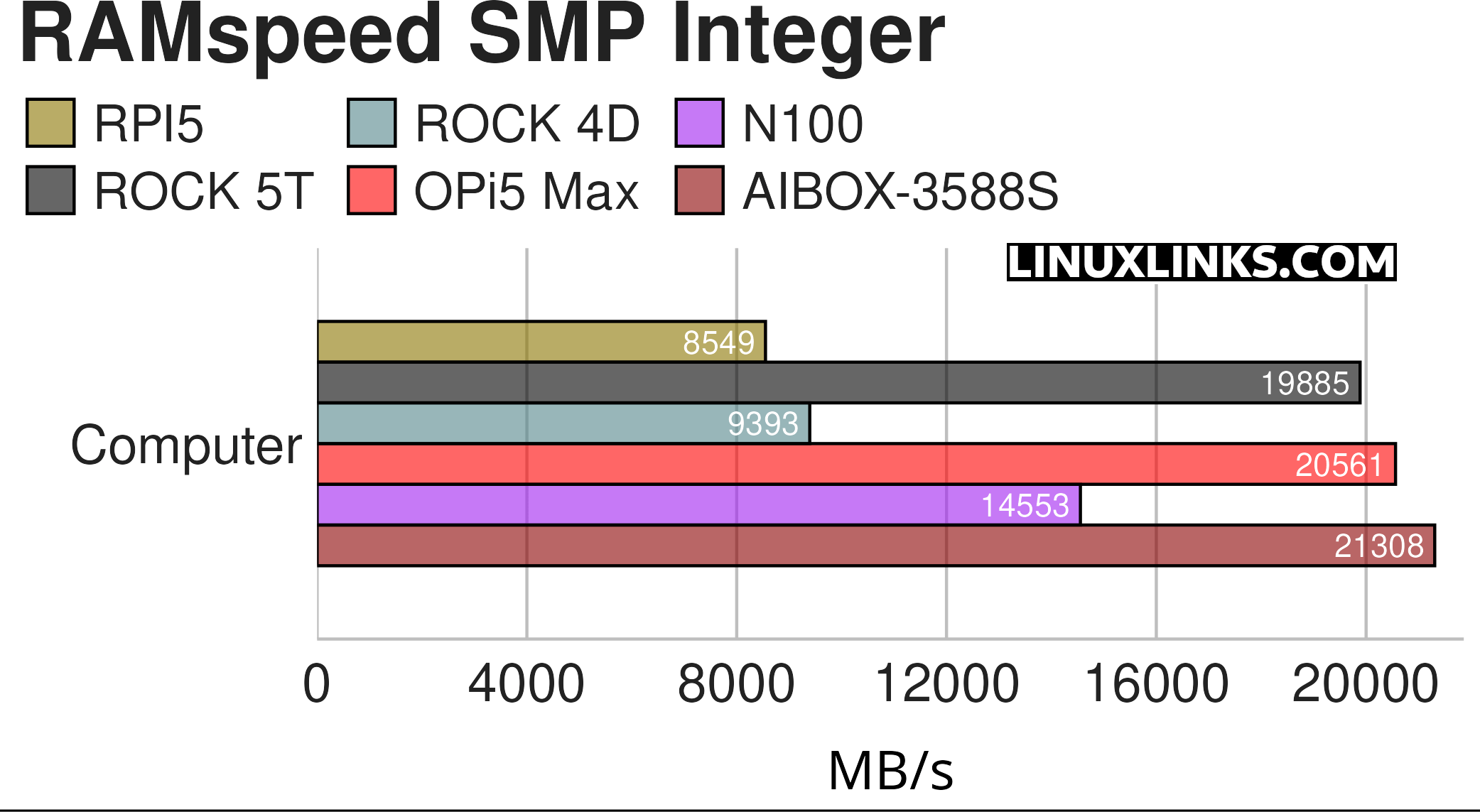
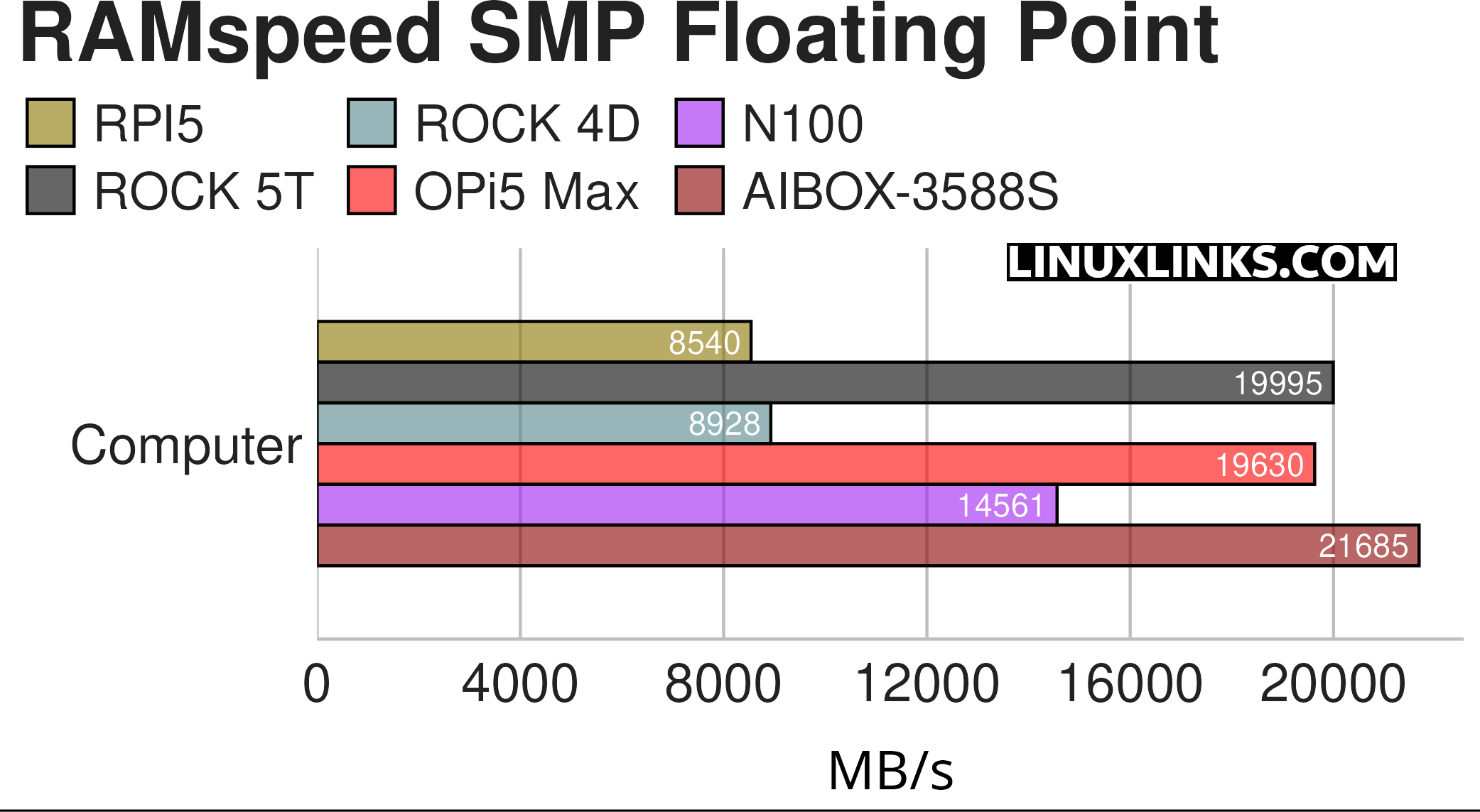
$ phoronix-test-suite benchmark ramspeed
In both RAM tests, the ROCK 4D’s results are reasonable although I’ve had hoped for more from its DDR5 RAM.
It wasn’t possible to run every benchmark on each machine. For example, the RISC-V machines didn’t successfully run the RAMspeed benchmarks.
I’ve also run a few additional benchmarks on the ROCK 4D.
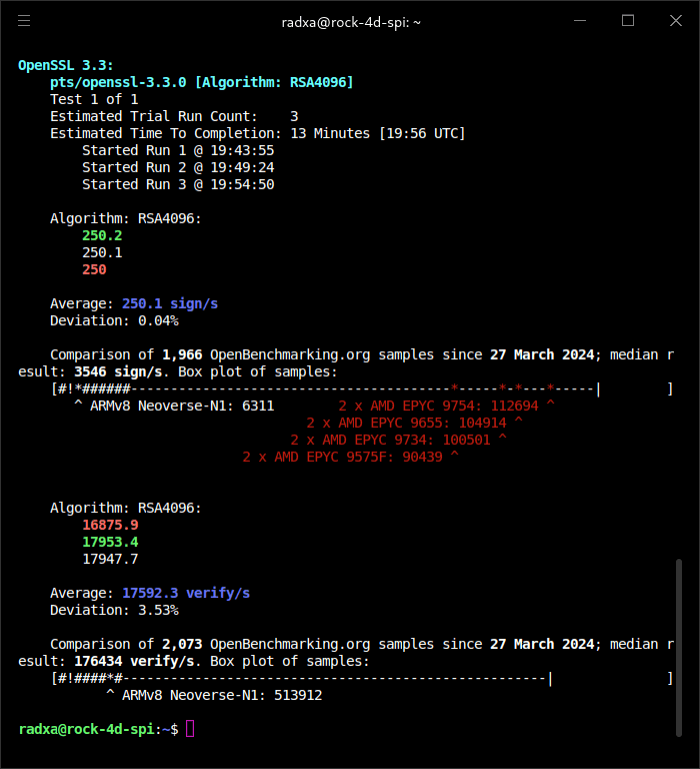
$ phoronix-test-suite benchmark openssl
OpenSSL is an open-source toolkit that implements SSL (Secure Sockets Layer) and TLS (Transport Layer Security) protocols. This test profile makes use of the built-in “openssl speed” benchmarking capabilities.
I’ve restricted testing to the RSA4096 algorithm.
The ROCK 4D scores an average of 250.1 sign/s and 17592 verify/s. That outscores the Firefly AIBOX-3588S which is much more expensive.
Let’s compare the ROCK 4D to a SBC that costs the same, the Orange Pi R2S 2GB RAM. The R2S scores 109.5 sign/s and 7991.5 verify/s. That’s less than half the performance of the ROCK 4D.
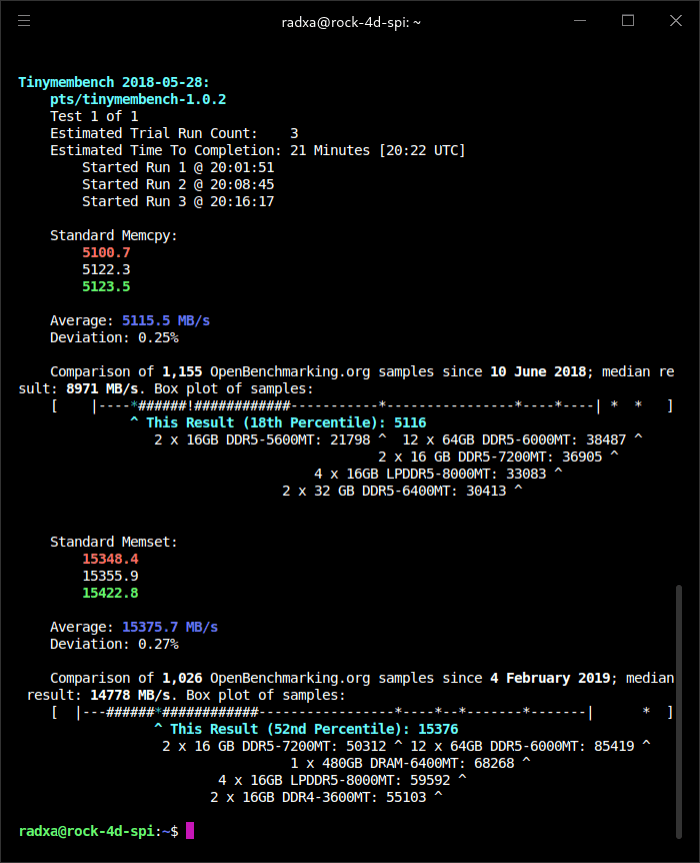
$ phoronix-test-suite benchmark tinymembench
This benchmark tests the system memory (RAM) performance.
In the next article in the series I’ll test power consumption under a variety of workloads.
Complete list of articles in this series:
| Radxa ROCK 4D | |
|---|---|
| Introduction | Introduction to the series and interrogation of the ROCK 4D |
| Benchmarks | Benchmarking the ROCK 4D |
| Power | I compare the ROCK 4D's power consumption to other machines |
| Radxa OS | A Debian-based Linux distribution with KDE Plasma |
